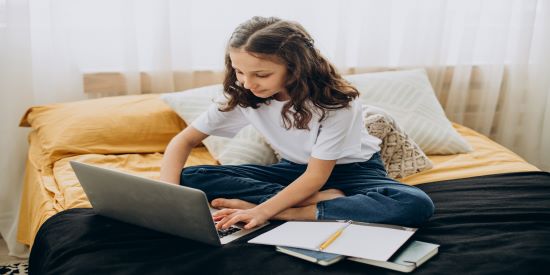Where is the creative classroom? Creativity and the role of play in learning
By Dr Nishat Riaz and Michael Houlgate
An estimated 53% of children in low- and middle-income countries cannot read proficiently by age 10, according to the World Bank.
According to UNESCO, around 175 million young people in poor countries – equivalent to around one quarter of the young population – cannot read all or part of a sentence, affecting one third of young women in South and West Asia.
The Annual Status of Education Report (ASER) revealed earlier this year that in Pakistan about 45% of children studying in the fifth standard in rural areas cannot read English sentences meant for students of Class II.
While these facts represent issues around reading comprehension, they also demonstrate some weaknesses in our teaching and learning approaches. Among many other aspects, holistic learning requires a learner to be part of the process; enjoy the learning and retain it without rote memorisation. This is the area of experiential and immersive learning that is gained by the interactions with nature and social environment. Reading is often the first opportunity for students to broaden their horizons. Hence, the reading proficiency challenge may be rooted in a deeper problem - the lack of creativity in our education systems that isn’t fulfilling the promise of “real learning”. This is not just a learning crisis; this is also a teaching crisis whose roots go back in the teaching-learning process and not in children. This is a crisis that can be traced back to the educational system prevalent today.
What does this represent?
 The African proverb "It takes a village to raise a child" highlights how an entire community must interact with children for them to be educated and grow up in a safe and healthy environment. However, increasingly, we have reduced education to schooling and institutionalisation.
The African proverb "It takes a village to raise a child" highlights how an entire community must interact with children for them to be educated and grow up in a safe and healthy environment. However, increasingly, we have reduced education to schooling and institutionalisation.
The schooling system of today was built for industrial and office needs- to produce a standard workforce by grouping them in age-based batches- batch of 2020, batch of 1910 etc- as well as segregating students into different programs based on their academic achievements, similar to how products on an assembly line are separated and distributed based on quality.
There are scheduled periods for teaching- period shifts, break times, etc., - as to encourage students to learn on schedule in a very rigid and linear pattern. Since childhood, children are given a regimental and scheduled education experience. For example, they are taught to sit at one place for a long period of time, something very unnatural for a child but entirely suitable for preparing human resources for cubicles.
Every day, students are led to a designated room where they learn pre-selected sections of specific subjects that are exposed to them based on the needs and wants of the institutions as well as any industries the students might join, rather than their own.
Education is a profound experience that can both liberate and oppress. As Mark Twain put it “I never let school get into the way of my education”. The learning approach of today has very clear cut, bordered parameters that restrict where, when and how learning is facilitated.
Ironically enough, our obsession with “out of the box learning”- has caused us to micromanage and mitigate every intuitive approach to learning that we find.
And perhaps most notably, this is all done by institutions that boast innovation and creativity in learning.
How do we cultivate creative learning?
To engage students with a constructive learning experience we need to break down the walls that we set around them. This will need more emphasis on personal pedagogy, individual experimentation with concepts, as well as intertwining subjects; creativity has no boundaries, limitations, or self-imposed restrictions, and neither should creative education.
It is essential to enable children to experience the world, based on their individual capabilities; exposing them to opportunities, and challenges that allow their minds and bodies to experience new tribulations. We also need to provide them safe places to experiment their skills, allowing them to challenge and develop their sense of not only the laws of nature but also the art of nature. What does this entail? Alongside a whole array of developing creative ways of learning and teaching, this also means, letting learners to interact with nature and its laws. For example, Friedrich Froebel, the man who conceived the idea of the kindergarten, said that playing is the highest expression of childhood development for it alone is the purest expression of a child’s soul. Playing allows a child to acclimate to his or her environment in a way that is not only natural to the child but engaging as well. Play allows a child to learn and experiment with whatever it wants to in a manner that nurtures that child’s creativity.
The value of play lies in the experience that adds to the knowledge and skills of a child, through exploration, fun, freedom, investigation, enquiry, negotiation, challenge, anger, fear, excitement and a whole range of even more feelings, emotions, skills and abilities.
Creativity plays a key role in the development, entrepreneurial ambitions and long-term personal growth of a student. In the 21st century, creativity is only becoming more and more important; according to the report of World Economic Forum in 2020, critical thinking and problem-solving top the list of skills that employers believe will grow in prominence in the next five years. These have been consistent since the first report in 2016.
British Council often employs creativity in the classroom: students plan out their own imaginary countries, including designing flags, writing anthems and making laws; they learn about the importance of human rights, conflict resolution and education. Burying time capsules like those in the garden of a Skate School in Mazar-e-Sharif, helps children to imagine a future without conflict, while setting up a recycling station like the one in Johannesburg helps children to see their own role in making a difference. These kinds of activities help them to envision a future which is brighter than their present.
COVID19 has offered an opportunity to rethink and reimagine a better learning approach. Let us throw the box out of the window and recreate a refreshing learning system to leave something for those inside it.
About the authors
Dr Nishat Riaz MBE has over two decades of sector expertise. Currently Director Education at British Council Pakistan, Nishat is a social development advisor, author of several articles and academic papers and a speaker on education and development issues. Nishat is on Twitter at @nishatriaz
Michael Houlgate is the Area Director for Sind and Balochistan in British Council Pakistan. He has rich experience of leading educational and cultural programmes in China, Afghanistan and Egypt. He can be reached on Twitter at @MichaelHoulgate.


